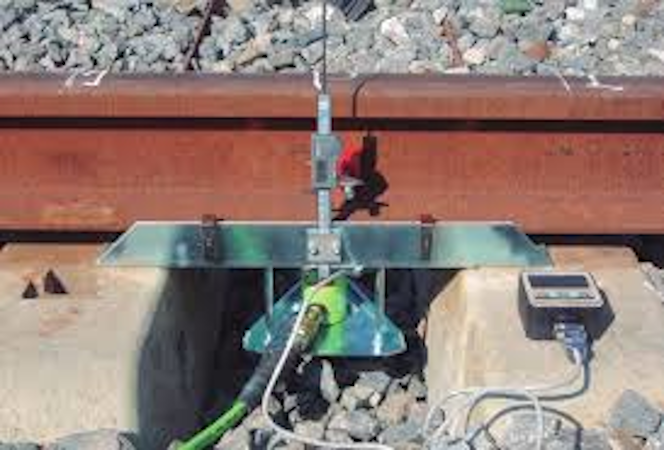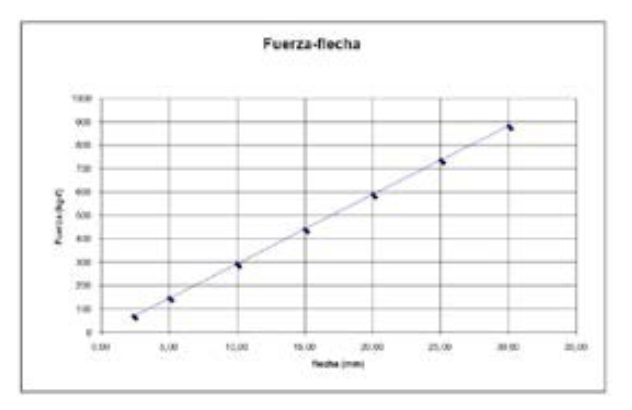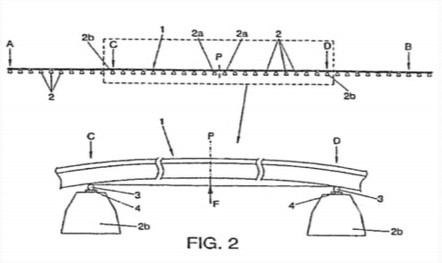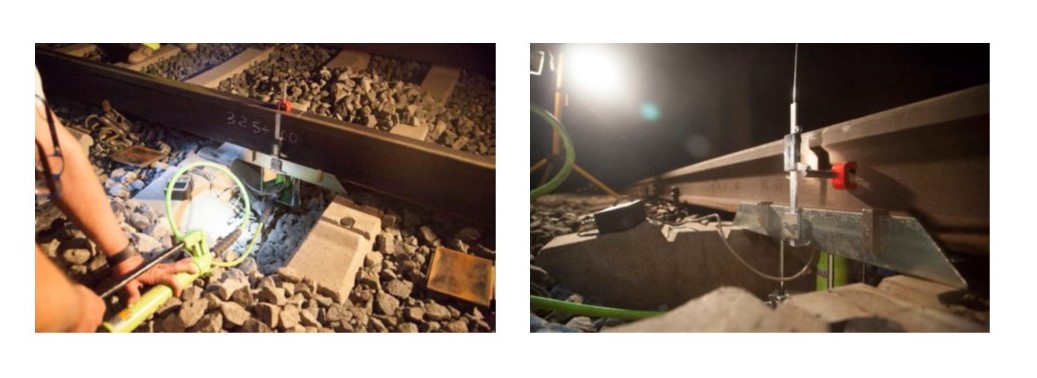Flexrail
Procedure and equipment for measuring longitudinal stress in railways

The system provides information on the longitudinal stress of the rail without having to cut it. Flexrail has been conceived for quality control of rail neutralization works when they are being assembled, as well as for carrying out checkups in case of geometric deformation of the rail or after interventions that may have altered the stress distribution.
It consists of applying a vertical force of variable magnitude in the middle of a rail section, once released from its fixings and supported by two middle rollers, in order to measure the displacement experienced by the rail.
The binomial effort-displacement binomial is graphically depicted and the gradient of the straight line drawn, applied to a linear mathematical expression, allows the longitudinal stress of the rail to be calculated in equivalent Celsius degrees. This mathematical expression depends on the rail type and the distance from the point of application of the vertical force to the middle and end supports of the rail section.
It also facilitates the calculation of the stress-free temperature of the rail as the sum of the longitudinal stress, in celsius degrees, previously calculated, and the rail temperature obtained from an approved meter.
The stress-free temperature is compared to the neutral temperature, which is the corrected arithmetic average of the maximum and minimum zone temperatures. The procedure is applied with low rail temperatures, when they are below the stress-free temperature.

- Residual manufacturing stress. Focused mainly on the head of the rail, since it has more mass and therefore takes longer to cool.
- Residual welding stresses. The high temperature of the welding generates stress when the rail cools.
- Railway traffic induced stress.
- Climatic-induced stress produced by thermal changes.
- Simplifies the measurement process of the rail longitudinal stress.
- Reduces considerably the cost of this process, as there is no need to cut the rail, as is traditionally done.
- Minimizes the appearance of kinks and real breakage.
- Reduces the number of welding interventions in the rail

- Load cell and digital display (in kg-force).
- Digital gauge - vertical displacement (arrow in mm).
- Hydraulic equipment: manual pump and cylinder.
- Plates and rollers for the support and free movement of the rail.


